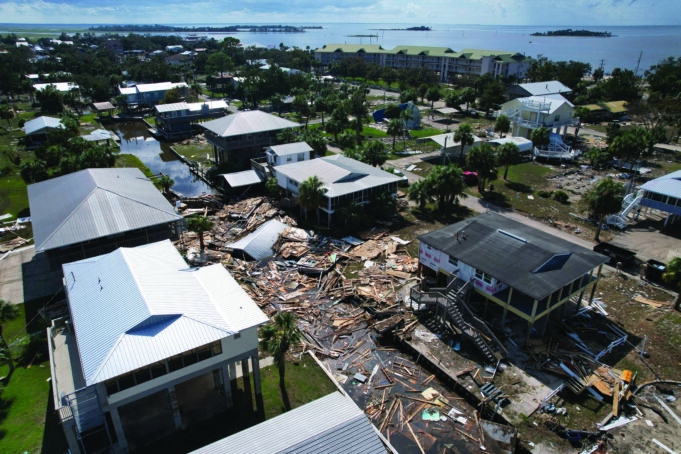HORSESHOE BEACH, Fla.—Hurricanes and tropical storms are nothing new in the South, but the sheer magnitude of damage from Idalia shocked Desmond Roberson as he toured what as left of his Georgia neighborhood.
Roberson took a drive through Valdosta on August 31 with a friend to check out the damage after the storm, which first hit Florida as a hurricane and then weakened into a tropical storm as it made its way North, ripped through the town of 55,000.
On one street, he said, a tree had fallen on nearly every house. Roads remained blocked by tree trunks and downed power lines, and traffic lights were still blacked out at major intersections.
“It’s a maze,” Roberson said. “I had to turn around three times, just because roads were blocked off.”
The storm had 90 mph winds when it made a direct hit on Valdosta on August 30, Georgia Gov. Brian Kemp said.
“We’re fortunate this storm was a narrow one, and it was fast moving and didn’t sit on us,” Gov. Kemp told a news conference on August 31 in Atlanta. “But if you were in the path, it was devastating. And we’re responding that way.”
The storm first made landfall August 30 in Florida, where it razed homes and downed power poles. It then swung northeast, slamming Georgia, flooding many of South Carolina’s beaches and sending seawater into the streets of downtown Charleston. In North Carolina, it poured more than nine inches of rain on Whiteville, which flooded downtown buildings.
Thousands of utility line workers rushed to restore power in Florida but nearly 95,000 customers were still without electricity the morning of September 1.
The storm had moved away from the U.S. coast early August 31 and spun out into the Atlantic, still packing winds of 60 mph on September 1.
Meanwhile, residents along the path of destruction returned to pick through piles of rubble that used to be homes.
James Nobles returned to the tiny town of Horseshoe Beach in Florida’s remote Big Bend to find his home had survived the battering winds and rain but many of his neighbors weren’t as fortunate. “The town, I mean, it’s devastated,” Mr. Nobles said. “It’s probably 50 or 60 homes here, totally destroyed. I’m a lucky one.”
Residents, most of whom evacuated inland during the storm, helped each other clear debris or collect belongings—high school trophies, photos, records, china. They frequently stopped to hug amid tears. Six-foot-high watermark-stained walls still standing marked the extent of the storm surge.
Florida Gov. Ron DeSantis toured the area with his wife, Casey, and federal emergency officials.
“I’ve seen a lot of really heartbreaking damage,” he said, noting a church that had been swamped by more than four feet of water.
Tammy Bryan, a member of the severely damaged First Baptist Church, said Horseshoe Beach residents consider themselves a family, one largely anchored by the church.
“It’s a breath of fresh air here,” Bryan said. “It’s beautiful sunsets, beautiful sunrises. We have all of old Florida right here. And today we feel like it’s been taken away.” (AP)













